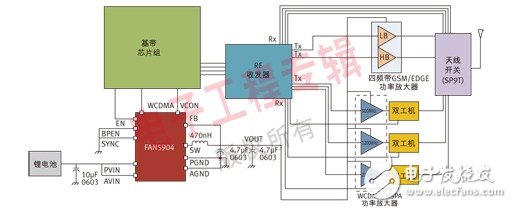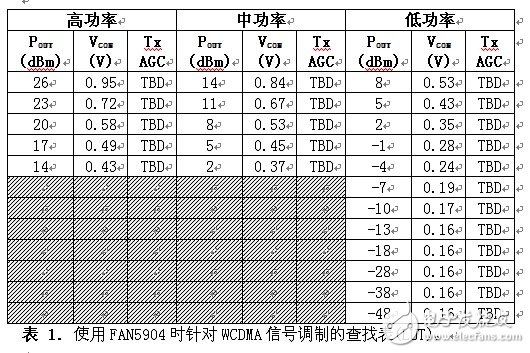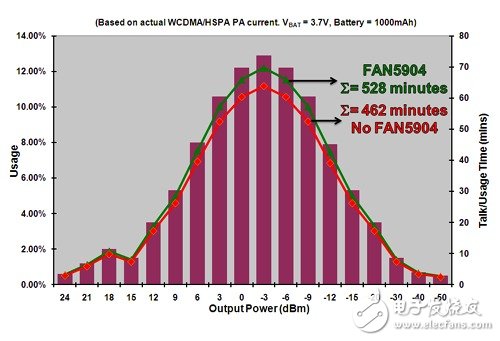Have you noticed the extent to which people are fascinated by mobile devices, especially smartphones? People use their smartphones to surf the web, check and write emails, play online games or update social networks. All of these activities, plus making voice calls, consume battery power, from power amplifiers (PAs) to displays and core chipsets, which consume a lot of energy. In the end, the size of lithium-ion batteries can only be increased appropriately to ensure that smartphones are not too bulky.
However, there are several ways to make users feel satisfied, avoid charging the smartphone often, or running out of battery power in an inappropriate time. Power amplifiers in smartphones consume about 30% of the total power, and in areas with poor network coverage, this ratio can be as high as 70%. Smartphones and mobile phones are generally required to be compatible with previous generations of cellular network protocols. Most mobile phones today have so-called HEDGE-enabled capabilities, which means they can support HSUPA, HSDPA, WCDMA, EDGE, GPRS and GSM. In other words, 3.5G (HSUPA and HSDPA) handsets support 3G (WCDMA) and 2G (EDGE, GPRS and GSM) technologies. There are also other handsets on the market that support 3G cellular technologies such as CDMA2000 1x EV-DO and TD-SCDMA, which also consume a lot of power.
Whether it is 3G or 2G, the power amplifier consumes a lot of power, so an effective method is needed to get longer call/working time. Power amplifiers consume power whether they are making voice calls or sending data from a cell phone to a base station. In areas with poor reception, higher output power levels are required, which means higher power consumption. For the EDGE portion of 3G power amplifiers and GSM/EDGE power amplifier modules (PAMs), not only a certain level of output power is required, but also sufficient linearity is required to ensure the fidelity of the signal sent to the base station.
For the technology around the power amplifier, two effective methods have been developed: DC-DC converter and envelope tracking. The first is a more popular solution. Fairchild's 6W, 3MHz/6MHz buck converter FAN5904 for 2G/3G power amplifiers is targeted at this application. The product is specifically designed to support GSM/EDGE PAM and 3G/3.5G PA because the board space is so precious in the handset that designers no longer need to use two separate buck converters. The FAN5904 supports 3G wireless standards ranging from WCDMA to HSUPA+ and the world's popular CDMA200 1x EV-DO. In addition, the device supports China's 3G standard TD-SCDMA and HSUPA for TD-SCDMA signal modulation for higher data rates. With the advent of GSM/EDGE-compatible "TEDGE" handsets supporting TD-SCDMA, the FAN5904 will be an ideal solution.
The FAN5904 works in conjunction with a baseband processor and power amplifier to reduce power consumption. The baseband chipset will set the output power level based on the information received from the base station and then convert it to the supply voltage so that the FAN5904 can power the power amplifier. The system application diagram of Figure 1 shows the interface between the FAN5904 and the baseband chipset, RF transceiver, and power amplifier. In order to generate the correct supply voltage corresponding to the output power, the firmware of the baseband chipset is required to contain another column of content in the Tx AGC/POUT lookup table (LUT).

Figure 1. Schematic diagram of the system application of the FAN5904 with a baseband processor, RF transceiver and 3G power amplifier, and GSM/EDGE power amplifier module.
Table 1 shows an example of how to configure a lookup table (LUT) for WCDMA and HEDGE ports of a HEDGE handset. This table is divided into three main parts: Avago's 3G power amplifier, which is divided into high, medium and low power modes. Other power amplifiers have different settings due to different structures. The columns in the high, medium, and low power mode partitions are the output power in this mode and their corresponding VCON voltages, which are the voltages generated by the baseband processor, informing the FAN5904 to provide the correct output voltage for the power amplifier to obtain a specific Output Power. GSM and EDGE require different lookup tables.

Table 1: Examples of how to configure lookup tables (LUTs) for WCDMA and HEDGE ports on a HEDGE handset
The baseband processor dynamically adjusts the power supply voltage of the power amplifier for output power levels, thereby reducing the current consumed by the power amplifier. This results in two important results: one is to reduce the power supply voltage and current, so that heat dissipation is reduced; the second is to extend the talk time and data usage time of the smartphone. At high output or high current loads, the FAN5904 operates in 6MHz PWM mode, but it automatically switches to Pulse Frequency Modulation (PFM) mode when "medium" or "low" output power is required. In PFM mode, the converter operates at a lower switching frequency to maintain higher efficiency. Figures 2 and 3 show the DG90 power distribution function for WCDMA (voice and data) signal modulation, showing the performance of a 3G power amplifier with and without the FAN5904. For voice calls, the FAN5904 works in PFM mode most of the time, because according to the DG09 curve, the PFM mode takes less than 10% of the output power above 18 dBm. On the contrary, in order to ensure the signal-to-noise ratio of the receiver, a higher "per-bit energy" is required in the data transfer mode, so in the data transfer mode, the time at which the output power is 16 dBm or more occupies 33%.

Figure 2. Talk time analysis of a 3G power amplifier with and without the FAN5904 for WCDMA signal modulation and 1000 mAh Li-Ion battery conditions.

Figure 3. Data transmission time analysis of a 3G power amplifier with and without the FAN5904 for WCDMA signal modulation and 1000 mAh Li-ion battery conditions.
Outdoor Fixed LED Display is a popular product for its high quality, every year sold to at least 80,000 pieces around the world, including Europe, North America, southeast Asia.Compared to other indoor LED display in the market, its biggest advantage is that it can display high-definition images while maintaining low power consumption.Besides, it adopts Die casting aluminum cabinet which is ultra-thin and ultra-light and owns good heat dissipation.Easy to install and maintain and suitable for multiple indoor scenes.
Application:
* Business Organizations:
Supermarket, large-scale shopping malls, star-rated hotels, travel agencies
* Financial Organizations:
Banks, insurance companies, post offices, hospital, schools
* Public Places:
Subway, airports, stations, parks, exhibition halls, stadiums, museums, commercial buildings, meeting rooms
* Entertainments:
Movie theaters, clubs, stages.
Outdoor Fixed LED Display,Led Wall Display Screen,Curved Led Display Screen,Led Display Board
Guangzhou Chengwen Photoelectric Technology co.,ltd , http://www.cwledpanel.com